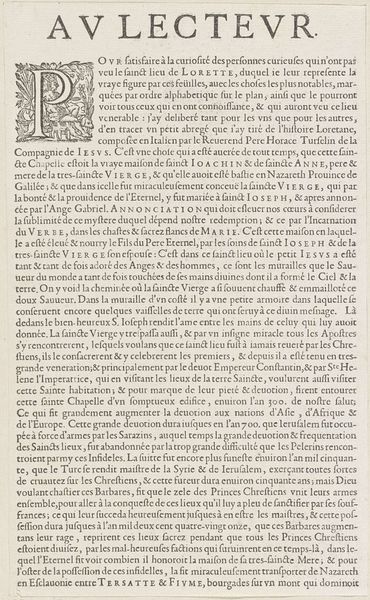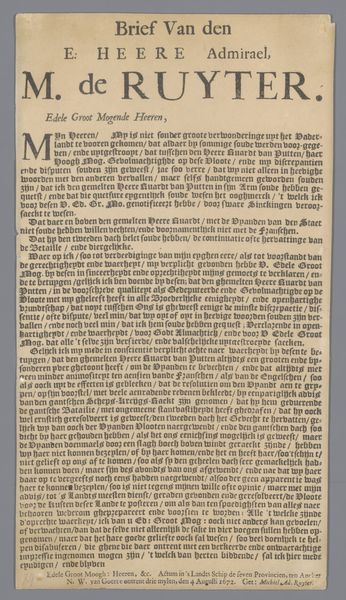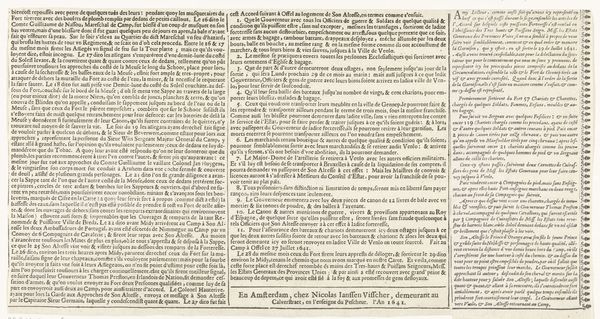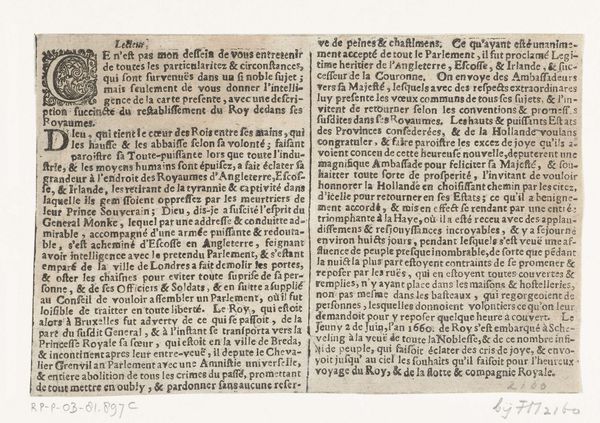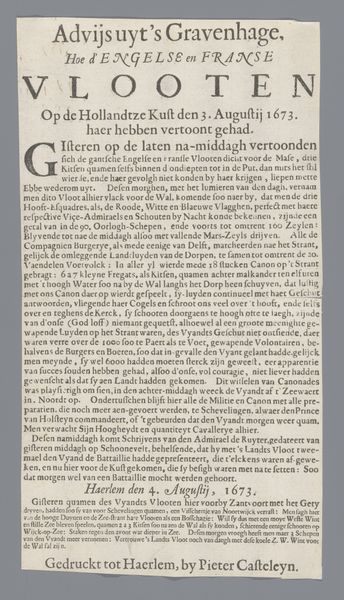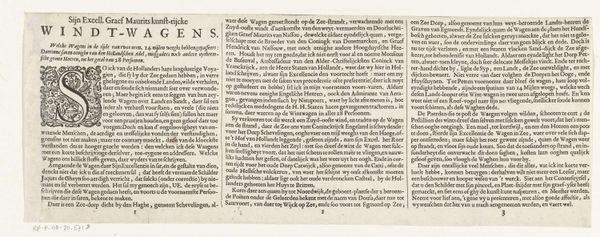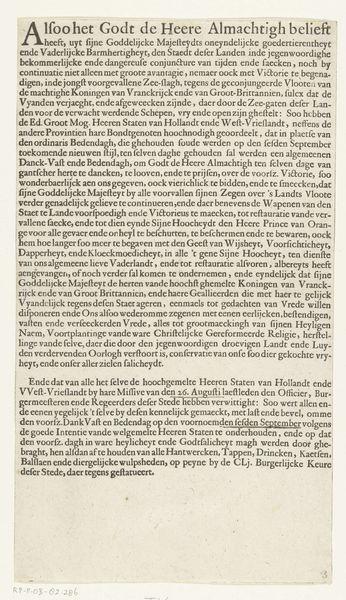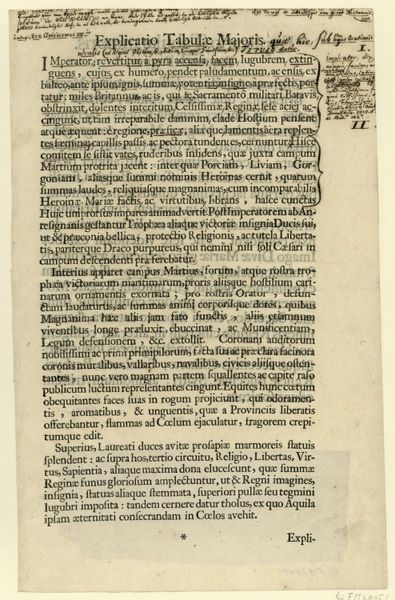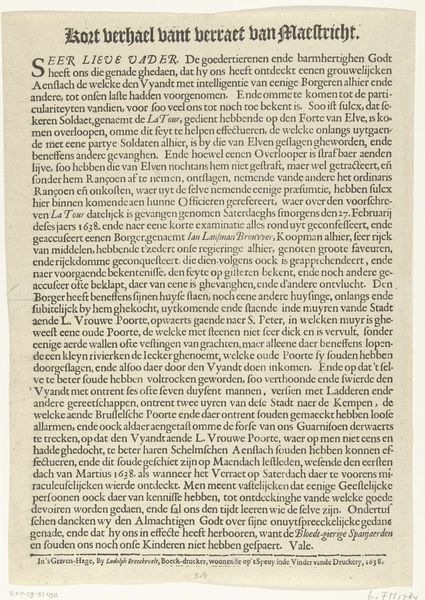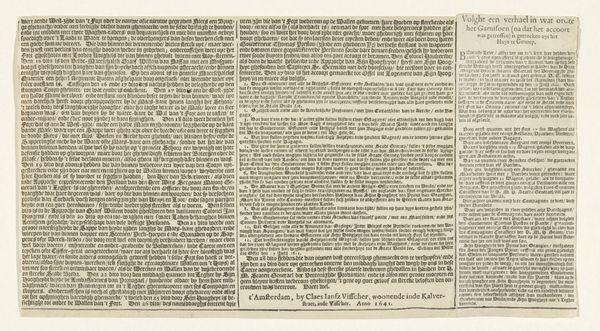
Tekstblad met een beschrijving van de dood van de gebroeders De Witt en de sentencie van Cornelis de Witt, 1672 1672
0:00
0:00
graphic-art, print, typography
#
graphic-art
#
article
#
dutch-golden-age
# print
#
text
#
typography
#
newspaper layout
#
image and text
#
history-painting
Dimensions: height 259 mm, width 160 mm
Copyright: Rijks Museum: Open Domain
Curator: Here we have "Tekstblad met een beschrijving van de dood van de gebroeders De Witt en de sentencie van Cornelis de Witt, 1672," a broadside from 1672, now in the Rijksmuseum. Editor: Right, by Jacobus Scheltus. It’s… intense. Just blocks of unforgiving text. It gives off this immediate sense of historical weight and tragedy, like a court record, but something much darker. How do you interpret this work? Curator: As an iconographer, I see it as a brutal piece of political theater rendered in print. The text describes, in vivid detail, the gruesome murder of the De Witt brothers, key figures in Dutch politics. It is charged with symbols of power, betrayal, and the fickleness of the mob, tapping into very potent anxieties. Note the precise date; it functions almost like a relic dating a horrific historical trauma. Editor: Political theater, that's interesting. So, beyond the stark imagery described, you see the text itself functioning symbolically? Curator: Absolutely. Think of the deliberate construction of the narrative: the supposed justice, the savagery, and the public display. Each word is carefully chosen to stoke public opinion, to justify an unspeakable act. Look at the arrangement of the text blocks, too—mimicking official pronouncements to further that justification. It mirrors a newspaper layout which gives it that appearance of fact, lending false credence to the brutality. Editor: It’s chilling how the text, just by its form, tries to normalize the horror. I hadn't considered the active role of its design in shaping perception. Curator: Consider the cultural memory embedded here, even now. These events still resonate in Dutch history, making the document itself a potent symbol of political violence and its lasting impact. What stays with you now? Editor: That texts can become icons themselves, carriers of charged meanings far beyond their literal content. And this particular one really shows how effectively the symbols and imagery are constructed to justify inhumane acts. Curator: Precisely. And hopefully, that recognition provides us some buffer against that type of construction now and in the future.
Comments
No comments
Be the first to comment and join the conversation on the ultimate creative platform.


